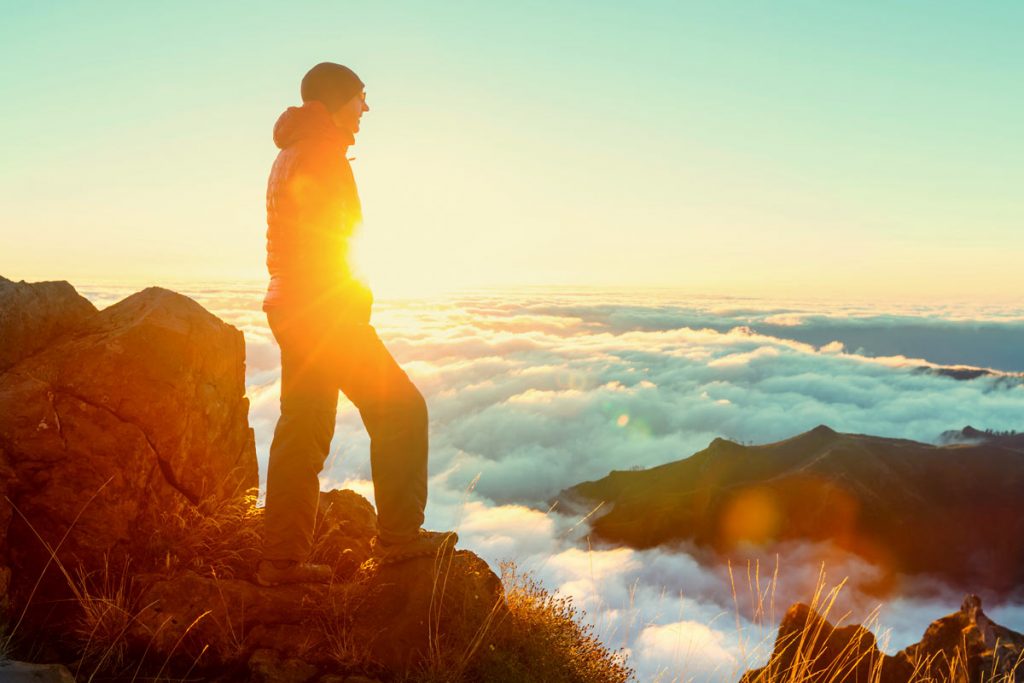Fill your life with experiences, not things. Have stories to tell, not stuff to show.
Hiking not only takes you to the beauties of nature, but it’s a great source of pleasure and joy. Talking about weather, summer is probably the best time to get some good hiking done.
Clear and sunny days are perfect for lacing up your boots and heading out for your hiking venture. But, along with the sun can come intense heat, and those same clear and sunny skies can bake the ground you’re walking on. If you don’t manage things properly, your fun day can turn into a painful and potentially dangerous one.
To stay healthy and have a good time in hot weather, keep few things in mind:
1- PLANNING
- Weather Forecasts
Before starting your hike, pay attention to the weather forecast. Humidity and heat can result in rain and thunderstorms. So it is better to keep yourself safe and well prepared.
- When to hike
Avoid the hottest time of day. Begin your hiking at sunrise and walk until 11.30 am – midday. Find yourself a shady spot, ideally by a water source, and rest until 2 or 3 pm.
You can also start your trip in the late afternoon to avoid the midday heat.
- Where to Hike
Choosing a route carefully can have an impact on your summer hike. It is always better to hike near water and stay in the shade. In this way, you’ll be able to enjoy the cool lake or river breeze. You can dip your hat, shirt or bandana in water and wrap them around your body. It will keep you cool and fresh. The best way to protect yourself from sunlight is multifunctional bandana that protect the back of your neck and face. You can opt for brands like 4inbandana.com for high quality and durable bandanas.
2- Clothing and Gear
When it comes to clothing and gear, remember “The Three L’s:”
- Lightweight
- Loose-fitting
- Light-colored.
- Light colors reflect the sun’s rays thus keeping you cool. Look for shirts, shorts, and pants in white, tan or khaki.
- Lightweight, loose-fitting clothing with good airflow will help your body regulate temperature. Nylon and polyester are good choices.
Wear wicking socks that fit well for keeping feet dry and preventing blisters. Choose wool or synthetic. Lightweight, breathable and comfortable hiking boots are important as your hike will greatly depend on your ease of walk and comfort of feet.
- Cover up – In order to protect your skin from UV rays, wear a lightweight long-sleeve shirt, sun sleeves, hat and a neck gaiter. Wear UV-blocking sunglasses and apply plenty of sunscreen on your skin for extra protection.
3- Hydration
During hot days, your body can lose large amounts of water through perspiration. Hiking at higher altitudes will also accelerate the loss of body fluids.
Proper hydration is essential to the health of the body’s organs, including the brain. Dehydration can lead to impaired brain functioning, which then results in confusion and impaired judgment. Blood can also thicken, forcing the heart to work harder.
Carry a hydration pack: Hydration packs are a great way to stay consistently hydrated since they allow you to constantly sip while walking, and keep your hands free. Take smaller and more frequent drinks of water. Take a sip tube for this purpose.
4- Take Regular Breaks
Hiking in hot weather can make you feel lethargic, so it’s important to take regular breaks. Keep your energy up. Put your backpack down, lay down, and give your body some much-needed rest.
Drink water and have some snacks with complex carbohydrates. The complex carbs will be easier on your stomach and give you a longer, more sustained energy boost. You can have instant food such as protein bars, nuts, and energy drinks.
5- Health Concerns
Heat cramps, heat exhaustion, and heat stroke are some of the most common health concerns related to hot-weather hiking.
- Heat Cramps
Heat cramps are painful muscle contractions that can happen suddenly during exercise in hot weather. To avoid them, make sure you’re properly hydrated. If you get heat cramps, do some gentle stretching to try to relieve the pain.
- Heat Exhaustion
Your body’s inability to cope with the stress of heat. It can occur after lengthy exposure to high temperatures and is often accompanied by dehydration.
Symptoms of heat exhaustion:
- Heavy sweating
- Rapid pulse
- Faintness
- Dizziness
- Fatigue
- Nausea
- Headache
Treatment for heat exhaustion:
Do the following steps immediately if you or another hiker is showing symptoms.
- Get out of the heat, look for a shady spot and lay down. Remove any excess clothing.
- Rehydrate yourself and if you have electrolytes or salt tablets, use some of those.
- Cool off by splashing cold water on your face and head. Dunk your head in water if you’re hiking near a lake or stream
- Heat Stroke
It occurs when your body overheats. It is a serious medical condition that can strike fast and requires immediate medical attention. Following are the symptoms of heat stroke:
- Throbbing headache
- Dizziness
- Nausea and vomiting
- Confusion
- Disorientation
- Anxiety
- Body temperature of 104-Degrees-Fahrenheit
Treatment for heat stroke:
- Rapidly cool down yourself and lay down in the shade, remove extra clothing and use cool water and fanning to lower the body temperature. If you’re near a lake or stream, cool off by sitting in the water.
- Rehydrate yourself
- Evacuate as soon as possible and head straight to the hospital for further evaluation.
Hiking is all about fun, thrill, adventure, and excitement. It the best way to get closer to nature. So, don’t sit back just because it’s hot outside. You can make yourself more comfortable by improving your gear & following the summer hiking tips.
If you can dream it, you can achieve it!
Author Bio:
